Habitat stacks and dead wood habitat
Us conservation types often get accused of not “tidying up” very well following work in woodlands. Lots of people expect woodlands to be full of big trees with a clear floor for the dog to run about in, and maybe the odd stick to throw. Whilst these woodlands are lovely in their own right, they’re not brilliant for nature.
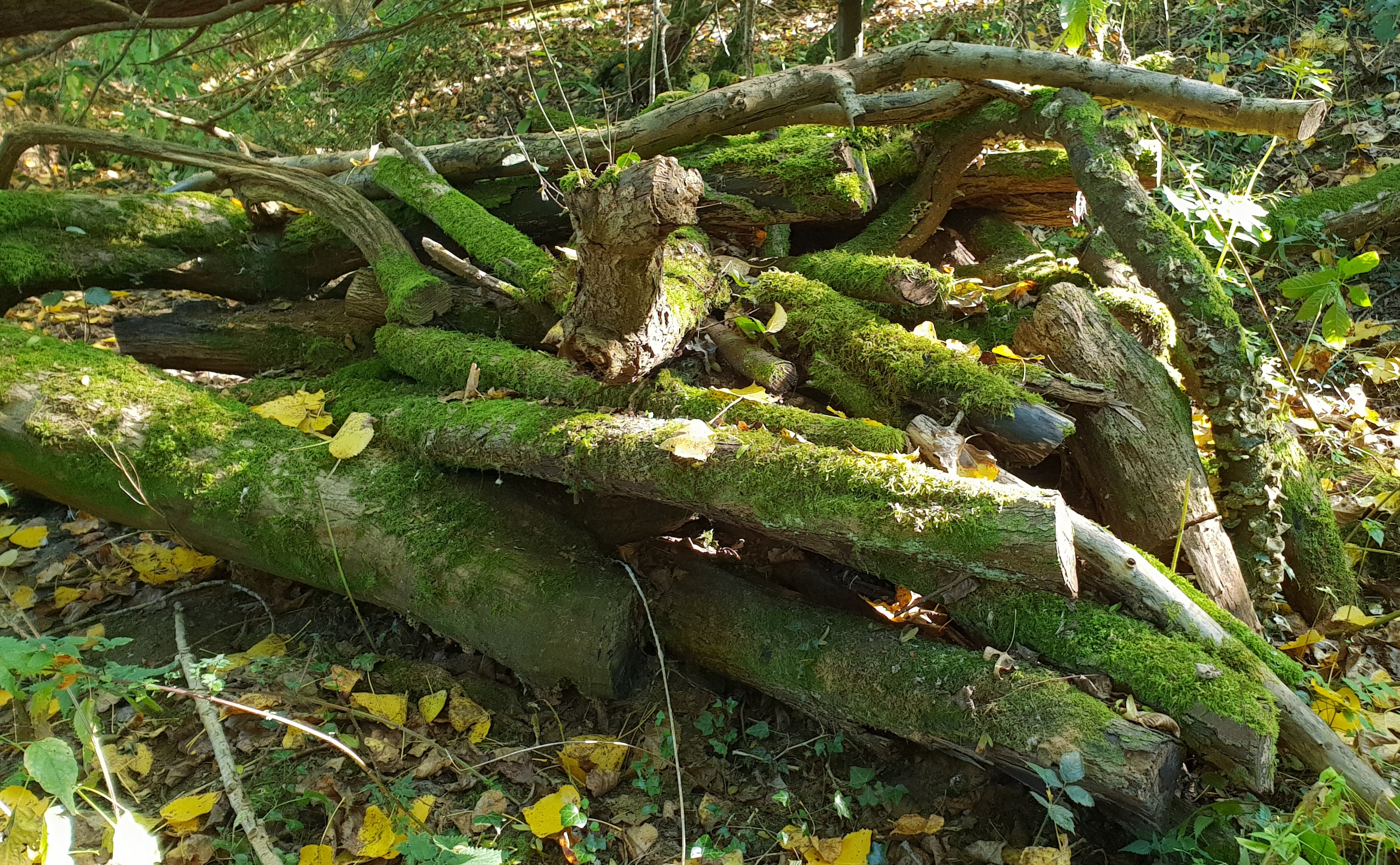
Dead Wood habitat
Imagine what happened in the wildwoods before we started managing them. There would be huge trees that eventually died of old age or got blown over in a big storm. Back then nobody scurried about tidying them up. Nature did that job very well without our intervention. There are hoards of creepy crawlies and masses of fungi, bacteria, mosses and slime moulds just waiting to get their clutches into dead wood.
It really is an awe-inspiring number of species whose job it is to break down dead trees. These species are collectively known as detritivores. I love that descriptive word for these wood munchers. It’s not come up in a pub quiz as yet, but we live in hope.
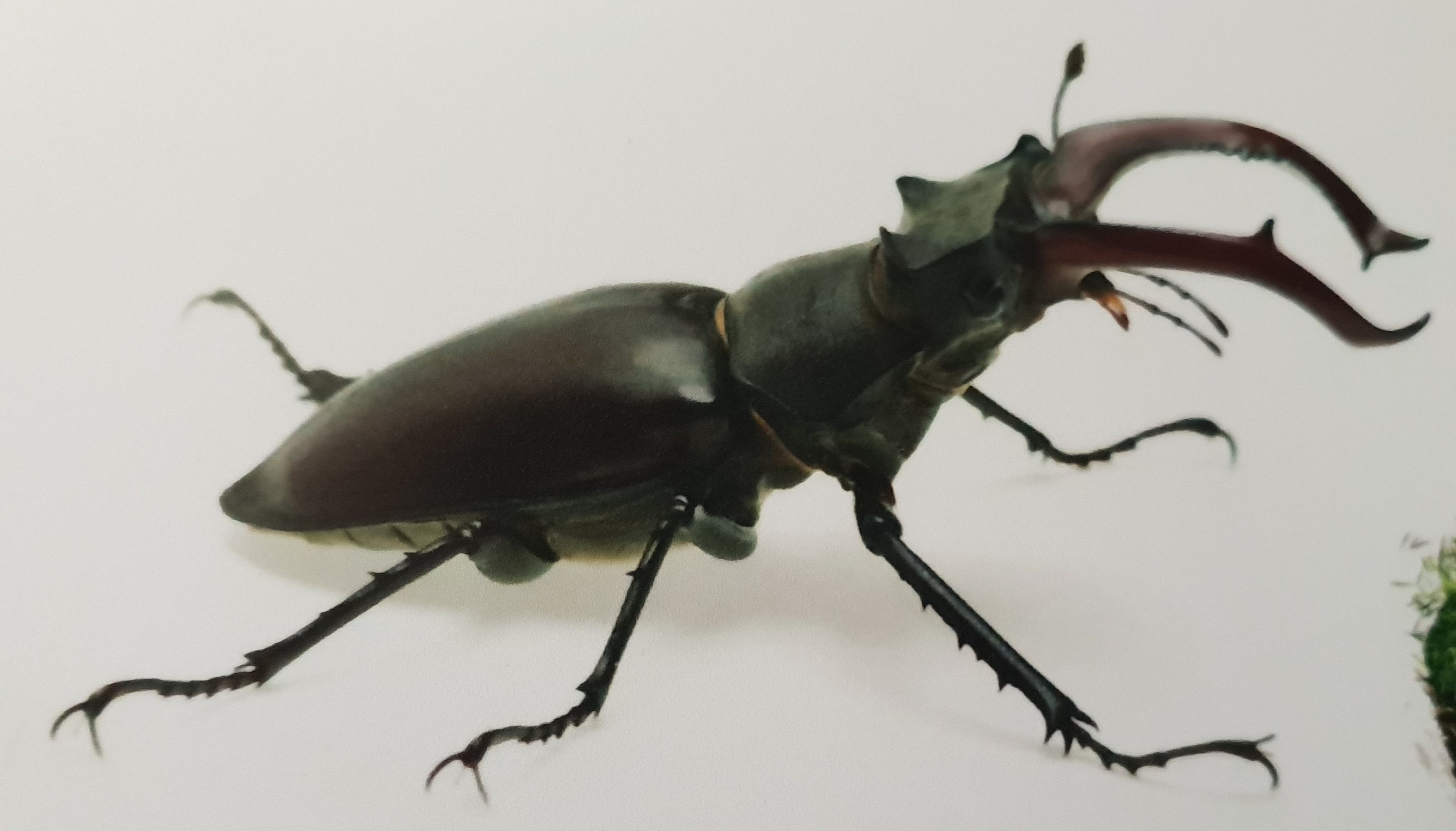
Stag Beetle
Some of these detritivores are absolutely spectacular, like the stag beetle pictured above or impressive bracket fungi. Many are much less showy, but are none-the-less vitally important for our eco-system. Think about those massive trees that got blown over in the great storm of 1987, (not that I’d remember that – way before my time…….who am I kidding!). Whilst we viewed the loss of these big trees as devastating, it was a real shot in the arm for the wider ecosystem. A few of those old hulks can still be made out in the woodlands, but they’ve largely been consumed by armies of detritivores steadily recycling them them into new life.
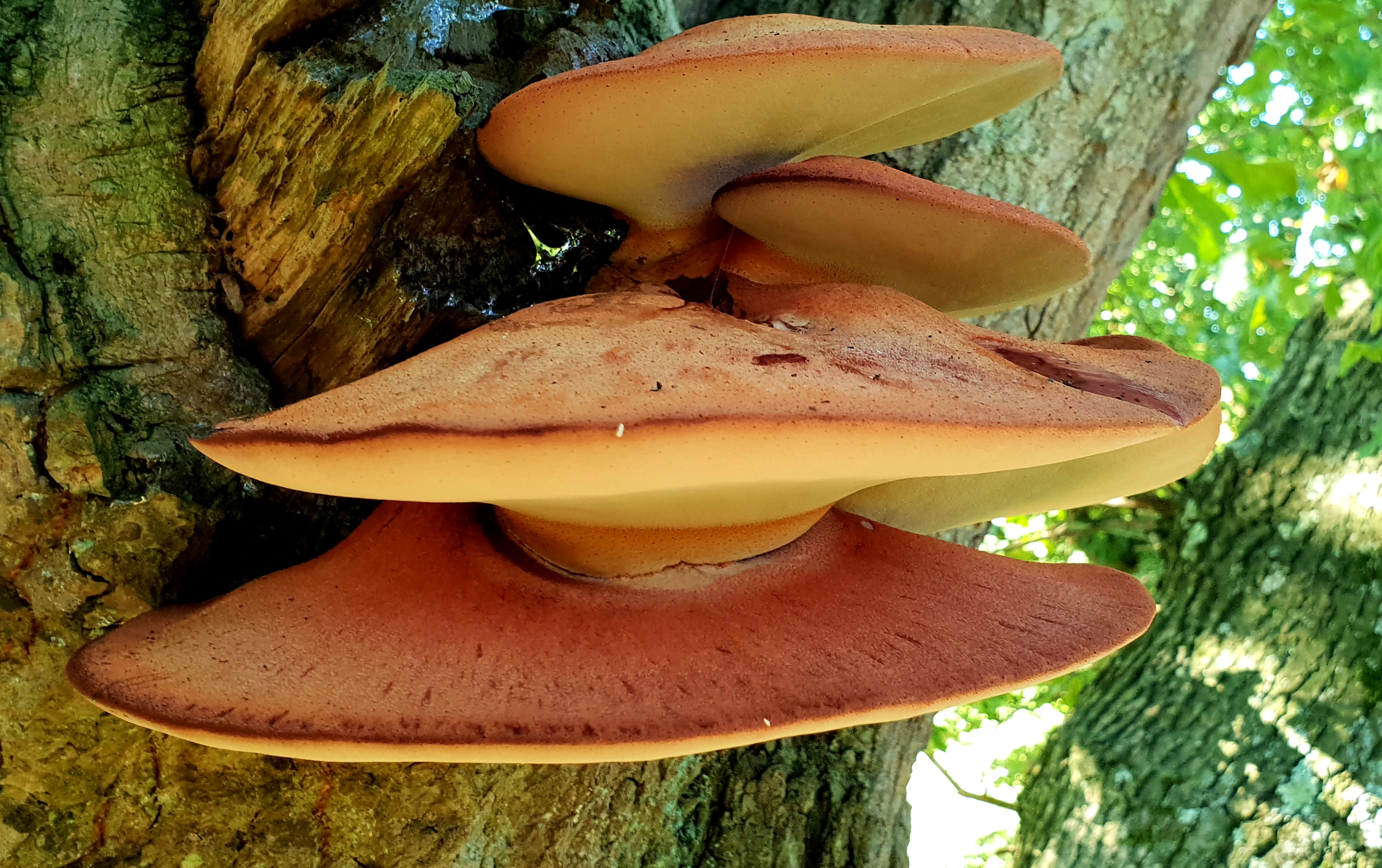
Beef steak fungus
These bugs, bees, beetles and fungi are right at the grass roots end of the food-chain. Within a few years of that great storm, detritivore numbers rocketed. Imagine how wonderful that was for the wider ecosystem, having that massive injection of food at the lower levels. All sorts of species rely on a banquet of grubs, insects and beetles. Lots of birds and small mammals directly benefit and in turn predators like owls, kestrels, buzzards etc have a little more food to go round. Some winners are not so obvious, like amphibians, reptiles and all sorts of predatory insects. The whole food chain benefits from the bottom to the top.
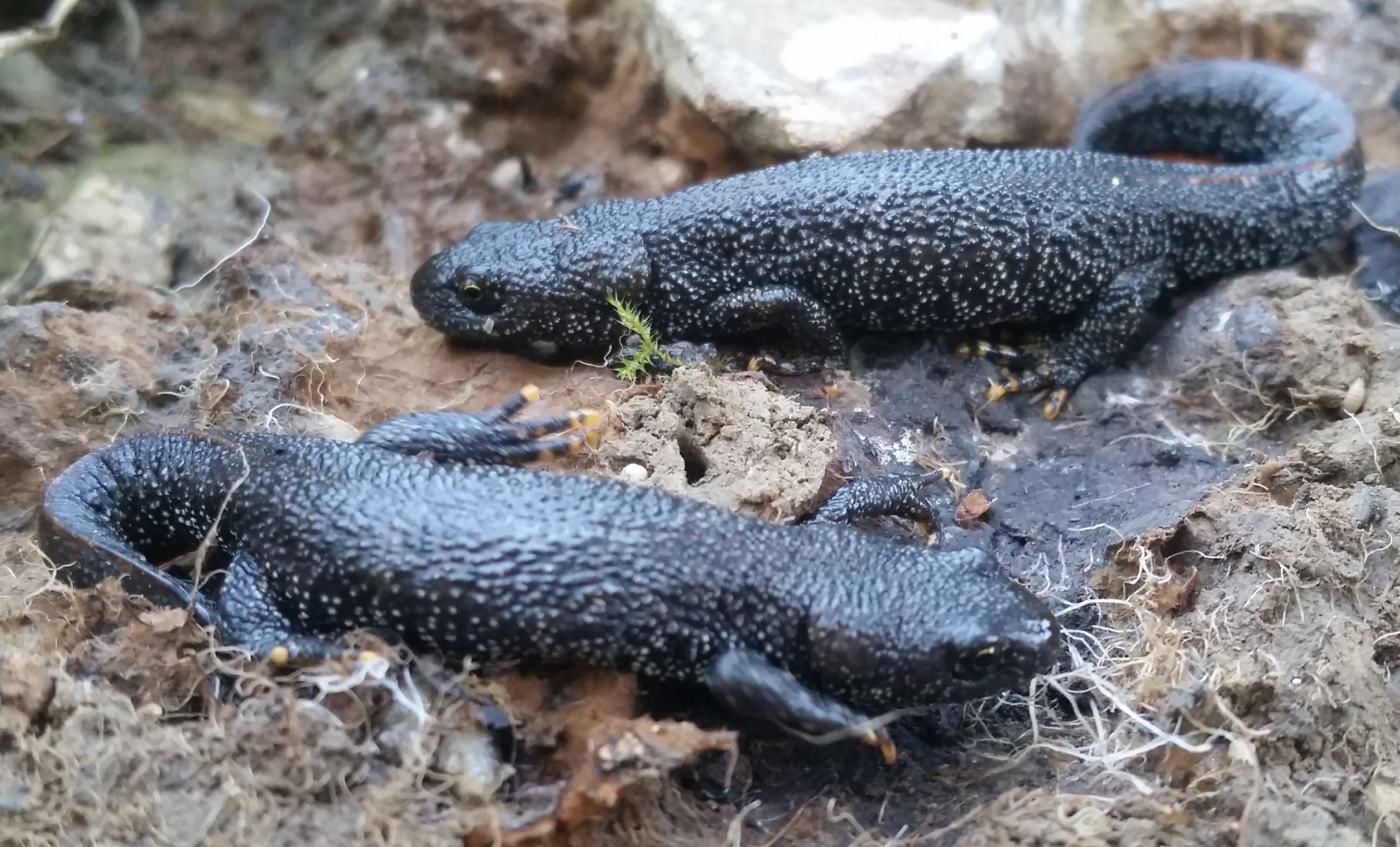
Great crested newts
So we are on the same page. Dead wood is good!
If this dead wood is so beneficial, why don’t we leave more laying around? It’s that perception of tidiness again. I’d love to leave fallen trees with their branch-wood crowns laying on the ground. With additional light the woodland floor comes alive with flowers, brambles, bryony, old man’s beard etc. Climbers cover the dead tree branches creating brilliant bird nesting habitat as well as providing a banquet for the wood consumers. However, my one man crusade isn’t going to persuade society that this is a beautiful thing to behold. Besides, there’s a commercial value to branch-wood as firewood and the trunks can be milled and put to good use.
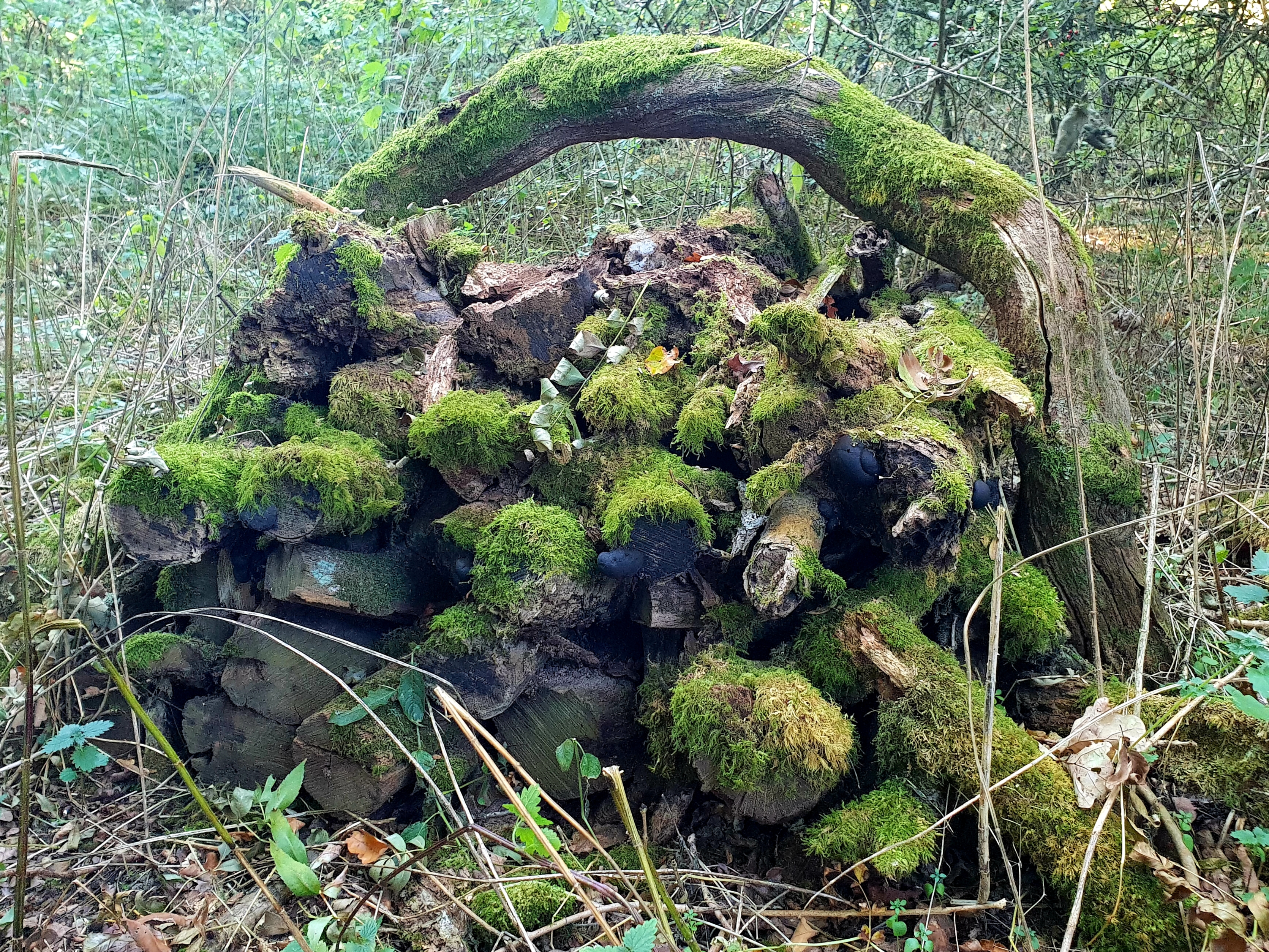
5yr old habitat stack with King Alfred Cakes fungi growing on it
As an alternative conservation bodies often encourage their rangers to build habitat stacks following woodland work. This is usually a pile of knotty, twisted wood with little commercial value stacked up in little piles here and there. The lengths of wood are normally three to four feet long and arranged in rows around six feet long and four feet high. It’s not as good as a whole tree left to decay, but it’s a massive leap in the right direction.
Do I really want a pile of scruffy dead wood in my nice garden?
Your habitat stack doesn’t have to look unkempt or scruffy. You can do your bit to improve your garden for wildlife with a neat habitat like the one pictured below.
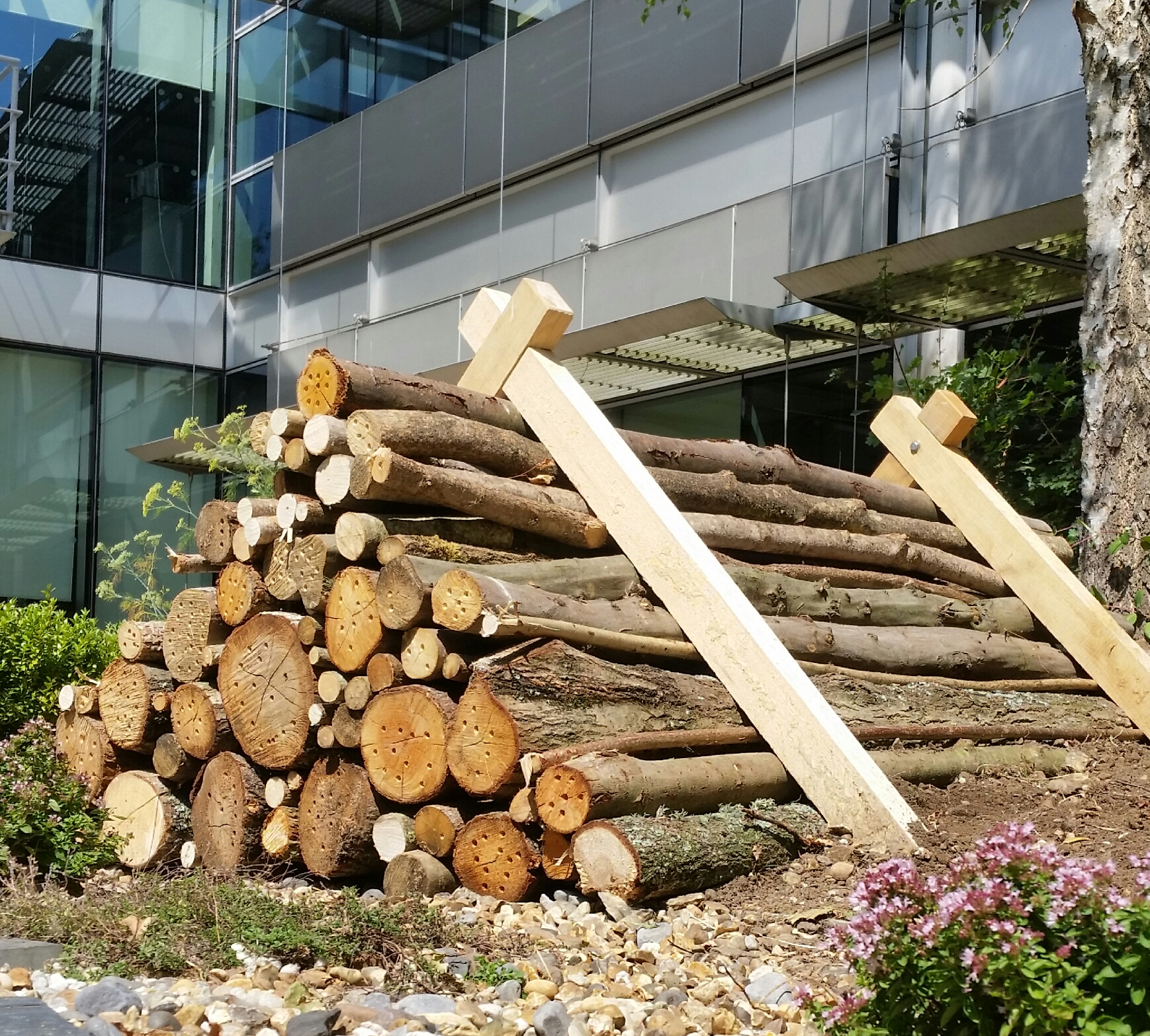
We constructed this one for a client to compliment their wildlife friendly garden. We drilled holes in the end of the wood to speed up access for the detritivores. Things like solitary bees, bugs and beetles will make early use of these holes.
We’ve filled this habitat stack with local native species including; willow, hazel, oak, ash, beech, field maple, elm and hornbeam. So if you’re a hungry detritivore surveying the menu, you’ve plenty of choice here.
In the interest of formality we cut all the timber to the same length and selected the straightest bits. Stacking it was a bit fiddly as the wood tapers, so you need to alternate thick ends and narrow ends. The one pictured is partially buried which means its likely to be damp for longer, giving the fungi a head start.
The stack is framed in oak triangles bolted together, which means it looks tidy and the timbers can’t roll if you’ve little ones who are likely to climb all over it. Pretty easy to make but give me a shout if you need a hand.

They’re really lovely additions to wildlife friendly gardens and I’d encourage everyone to make room for a bit of dead wood if you can.
As ever, if you’d like and help or advice, please don’t hesitate to get in contact.
Please leave a Reply